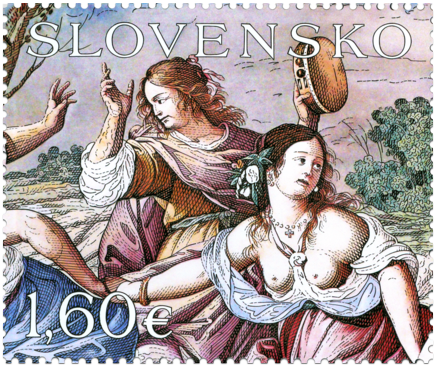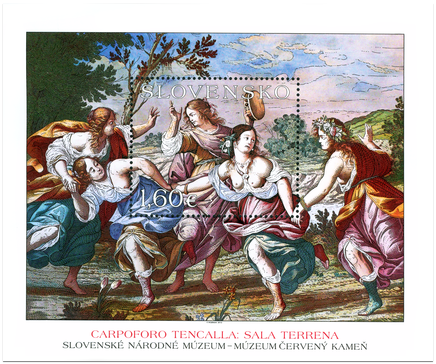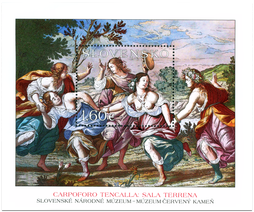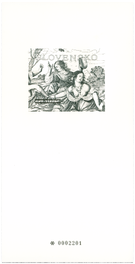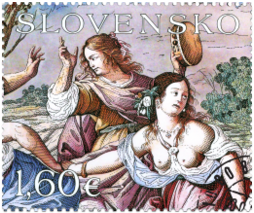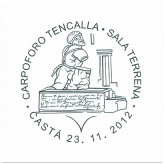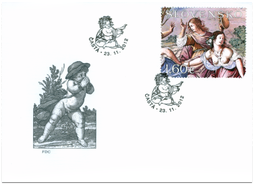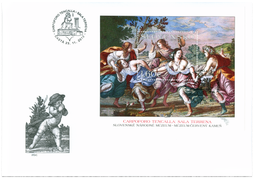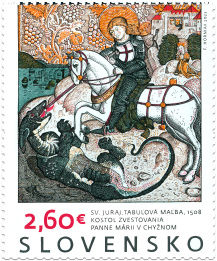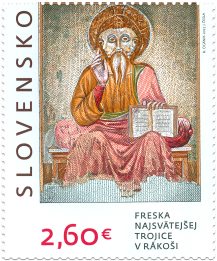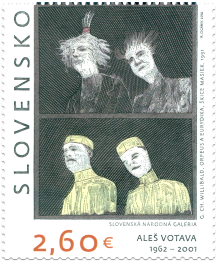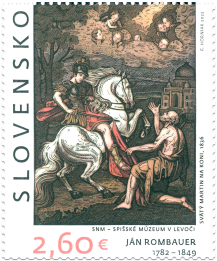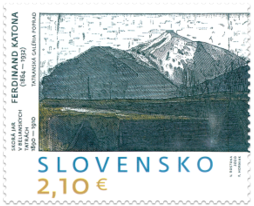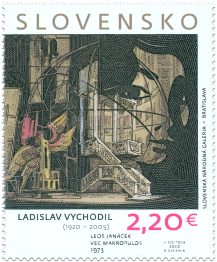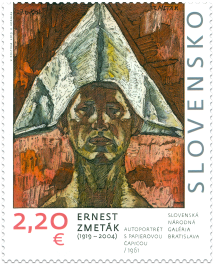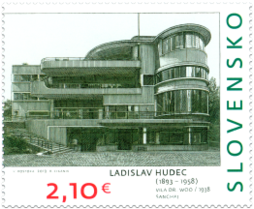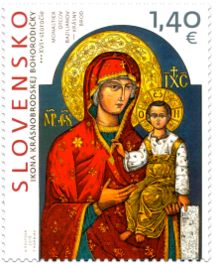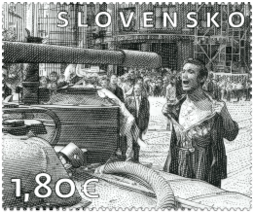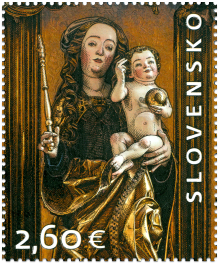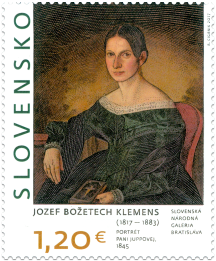This product is not for sale
This product is part of the following products
528 Date of issue
23.11.2012 Face value
1.60 €
In the middle of the 17th century, the Červený Kameň (Red Stone) Castle underwent an early baroque reconstruction. Italian artists and craftsmen changed the cold former Fugger stronghold into an aristocratic residence with the interior full of baroque splendor according to the plans of the imperial architect Filiberto Luchese and on the order of the Count Nicolas IV Palffy. Especially the Sala terrena built on the ground floor of the south-west castle wing stands out as a whole. It is the only example of such specific space incorporated in an Italian way on the ground floor overlooking a park or garden and making the stay of nobility pleasant at a variety of social occasions, which is in an original and preserved state.
The longitudinal space illuminated from the side by windows to the courtyard has a grotto built in two niches on the shorter side. It is constructed from tufa stone to create an appearance of an artificial cave with fountain. In the middle of the front wall with doors on both sides (an illusive painting of a male figure looking inside covers the left doors) there is a niche with the statue of Venus. In the upper part of the dome, there is a cartouche with a fresco “The Suicide of Lucretia” and on the sides, there are sculptured putti (pictures of children) holding the family coat of arms of Nicolas IV Palffy and his wife Eleonora Harrach. The lunette dome is covered with richly exuberant polychrome plastic stucco decorations with incorporated frescoes. The characteristic is the richness of shapes of rollwerk cartouches and bizarre oriental motifs assuming anthropomorphic shapes (fantastic masks and faun faces) with plastic figures of putti couples incorporated between lunettes.
Dancing nymphs and playing children painted in the main mirrors of the sala terrena dome are supplemented with the cartouche cycle of river landscapes in lunettes and small monochrome medallions. The interpretation of the client’s intention and allegorical meaning of the whole is yet to be clearly determined. Frescoes of extremely high quality from 1655, which, unlike the domed halls and paintings in the castle chapel on the first floor, survived in a remarkably intact (undamaged) state, were created by Carpoforo Tencalla from Bissone near Lake Lugano. The works at the Red Stone Castle are the first creations of the painter in the area north of the Alps, who later became a leading representative of the Italian early baroque frescos in Central Europe.
Jozef Medvecký
© 2024 POFIS - Postal philatelic service. All rights reserved

